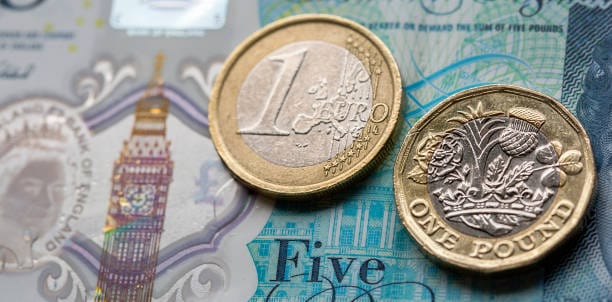GBP/EUR exchange rate midweek update: pound firms against euro as UK inflation prints hotter than forecast
The pound marched higher following hotter-than-expected inflation data for April that prompted investors to adjust their bets on interest rate cuts from the Bank of England (BoE).

(20/05/2024 to 22/05/2024)
Monday
The pound euro (GBP/EUR) exchange rate traded sideways but held its position at a two-week high a fraction below 1.17.
The UK currency shrugged off dovish remarks from BoE Deputy Governor Ben Broadbent to remain buoyant.
Broadbent said: “Whatever the priors of its individual members the MPC will continue to learn from the incoming data and, if things continue to evolve with its forecasts – forecasts that suggest policy will have to become less restrictive at some point – then it’s possible Bank Rate could be cut some time over the summer.”
The euro traded aimlessly amid a lack of macroeconomic data from the bloc.
Tuesday
The pound traded near a three-week high against the euro following the publication of Germany’s latest producer price index (PPI).
Investors fled the single currency after April’s PPI figures reported that German producer prices decreased more than expected. The PPI fell at an annual rate of 3.3% last month, after a 2.9% decline in March. This marked the 10th straight month of falling prices and was lower than the consensus forecast for a year-on-year fall of 3.2%.
The figures suggest that inflation in the Eurozone’s largest economy is likely to continue easing, potentially increasing the pressure on the European Central Bank (ECB) to cut interest rates – conditions that weighed on the euro.
The pound was stuck in a narrow range as a lack of market-influencing data left it rudderless.
Wednesday
The pound advanced into the 1.17 mid-range after UK inflation fell by less than expected, denting hopes of a June interest rate cut.
UK inflation cooled to 2.3% in April – its lowest level for almost three years – but the decline was smaller than expected. Analysts had forecast the annual increase in the cost of goods and services would drop to 2.1%, close to the BoE’s 2% target.
The chances of a rate cut next month were pared to roughly 15%, with August also now looking unlikely.
The euro struggled to garner investor interest due to a lack of impactful economic data releases.
Looking ahead
The UK preliminary PMI reports for May hit the headlines on Thursday. The manufacturing sector is forecast to post improved activity, whereas the service sector is expected to have slowed.
On Friday, UK retail sales data for April is expected to show sales to have fallen by 0.4% on a monthly basis, which could weaken the pound.
The latest preliminary PMIs are also due for publication from the Eurozone on Thursday. The services and manufacturing sectors in the bloc are both expected to show improved activity, which could give the euro a shot in the arm.
Contact a currency specialist to discover how they can help you take control of exchange rates.
